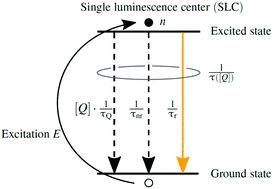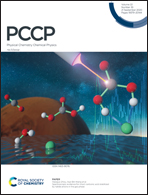Recombination mechanisms of luminescence type gas sensors
Abstract
Luminescence type gas sensors based on organic luminophores are characterized by an excellent signal stability over the luminophores' lifetime. Even though the sensing material is prone to degradation due to photobleaching, evaluation of the dynamic optical response allows to minimize aging induced drift effects of the luminophore and the optoelectronic components. The gas dependent luminophore decay time is mostly independent of the excitation intensity, which is attributed to the monomolecular recombination in many organic luminophores. To improve the overall sensor lifetime and to utilize this luminescence based sensor concept for long-term sensing applications, new luminophores are needed. Potential candidates are inorganic, semiconducting materials, which, however, show more complex recombination behaviour than the organic luminophores mentioned before, involving also bimolecular recombination. In the scope of this work, the differences of mono- and bimolecular recombination are discussed by the use of a simple statistical model. The theoretical aspects are furthermore confirmed by dynamic luminescence measurements on manganese doped zinc sulfide (ZnS). The semiconducting ZnS is an oxygen sensitive luminophore, which shows both, mono- and bimolecular recombination, depending on the excitation energy.



 Please wait while we load your content...
Please wait while we load your content...